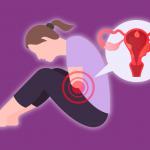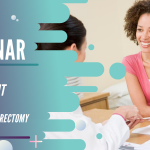
Why Are There Myths About Fibroid Treatment?
Word of mouth is a powerful tool to learn about new ideas from friends, family, or co-workers. However, it’s important to do your own research in order to get accurate information about the latest technologies and research. Lack of proper health education has led to many women to believe all the fibroid treatment myths they hear or see.
It’s shocking to learn that 44 percent of women diagnosed with uterine fibroids have never heard of a less invasive treatment. It’s also surprising that 1 in 5 women believe hysterectomy is the only solution for fibroid symptoms. This misinformation about treatment for uterine fibroids illustrates how important it is to raise awareness about women’s health topics.
The most alarming statistic yet is that over 73 percent of women who have never heard of Uterine Fibroid Embolization, did not first hear about it from their OB-GYN or primary physician. When you go to the doctor, you expect to get all of the information as a whole so you can make an informed decision for yourself and your future. When women aren’t getting the information they need about important health decisions, they look to other, less legitimate sources for their information.
What is Uterine Fibroid Embolization?
Uterine Fibroid Embolization or UFE, is a non-surgical procedure in which your uterine fibroids are shrunk by limiting their supply of blood and nutrients. This outpatient procedure is performed with an ultrasound-guided catheter through which embolic agents are released into the artery. With their blood supply cut off, fibroids naturally reduce in size and die off. Once the fibroid(s) are shrunk, symptoms should start to improve over the next few months.
Separating uterine fibroids and their treatment myths from facts will help you understand what is true or false, so you can make the choice about uterine fibroid treatment that is right for you.
Myth #1: Uterine Fibroid Embolization is a painful procedure
Due to the fact that UFE is a nonsurgical treatment, there are no incisions, stitches, or scarring involved with the procedure. Instead of undergoing general anesthesia, a light sedative is used so that patients will feel little to no discomfort during the actual procedure.
Myth #2: Hysterectomy is the only option
One of the most common fibroid treatment myths is hat hysterectomy is the treatment option. 20 percent of women polled in a recent study by the Society of Interventional Radiology stated they believed that hysterectomy, an invasive surgery removing the uterus either partially or fully, was the only treatment option for uterine fibroids. Hysterectomy is a cure for uterine fibroids, not a treatment.
Hysterectomy may be the right choice for some women; however, it should never be your first and only option. Get the facts and learn about the benefits of choosing a less invasive procedure like Uterine Fibroid Embolization, before making your ultimate decision.
Myth #3: UFE causes early menopause
Unlike hormone therapies and hysterectomies for fibroid treatment, UFE does not cause early menopause or any hormone interference. The fibroids are treated by shrinking them; therefore, your ovaries and hormones are left alone and intact.
Myth #4: Fibroids must be removed
One of the most common myths our doctors here from their patients is the idea that fibroids must be removed. Not all fibroids need removal and many can be effectively treated by shrinking the fibroids’ size with minimally invasive options.
Myth #5: Sexual functions get worse after UFE
One of the many benefits of nonsurgical UFE treatment is that your sex life may be improved after recovery. Fibroids that cause sex to be painful usually grow close to the opening of the cervix. UFE can reduce the size of the fibroid, which will relieve pain or pressure. UFE also helps treat heavy bleeding which can cause one to develop anemia. Fatigue from anemia can cause women to feel exhausted or have a significantly lower libido. UFE targets the fibroids to reduce period heaviness and length, which can reduce your risk of anemia.
Myth #6: You can’t get pregnant after UFE
Most women can successfully conceive after UFE. Unlike hysterectomy, where the uterus is remove, UFE allows for the preservation of the uterus and does not interfere with fertility. If you want to learn more about fertility and UFE, click on the button below.
Fertility and Uterine Fibroids
Myth #7: Women in menopause don’t need their uterus
Just because you are not planning to extend your family or are in menopause, does not mean that hysterectomy is the right option for you. Many doctors will suggest a hysterectomy to women who are going through menopause; however, invasive procedures may come with more risks that nonsurgical fibroid treatments. Some of these risks include: injury to surrounding organs, infection, anesthesia problems, early menopause, and other surgical complications.
In addition, many women who have had a hysterectomy must take hormone replacement medication after their surgery. Before choosing which procedure is best for you, take time to consider less invasive or permanent decisions like UFE.
Myth #8: UFE will be too expensive
When people first learn about UFE, many of them think that it will be too expensive or not covered by insurance. On the contrary, Uterine Fibroid Embolization is covered by most insurances including Medicaid. If you want to learn about insurance coverage, click the button below or call us at 855.615.255 to speak to one of our patient representatives about your individual plan.
Myth #9: The recovery will be long
One of the many benefits of UFE is its short recovery. Compared to invasive surgeries that can take five to eight weeks for full recovery, many women recover from UFE within the first seven to ten days following their treatment. It’s important to note that this number varies from patient to patient and your doctor can give you an accurate recovery timeline; however, UFE is known for its short recovery and the ability to return to work or school in a significantly less amount of time compared to surgery.
Treating uterine fibroids non-surgically
If you still have questions about fibroid treatment, give us a call at 855.615.2555. You’ll talk with one of our trained representatives who can give you all the information you need to make the right treatment decision. If you don’t feel like calling, click the button below to schedule your appointment online today.



